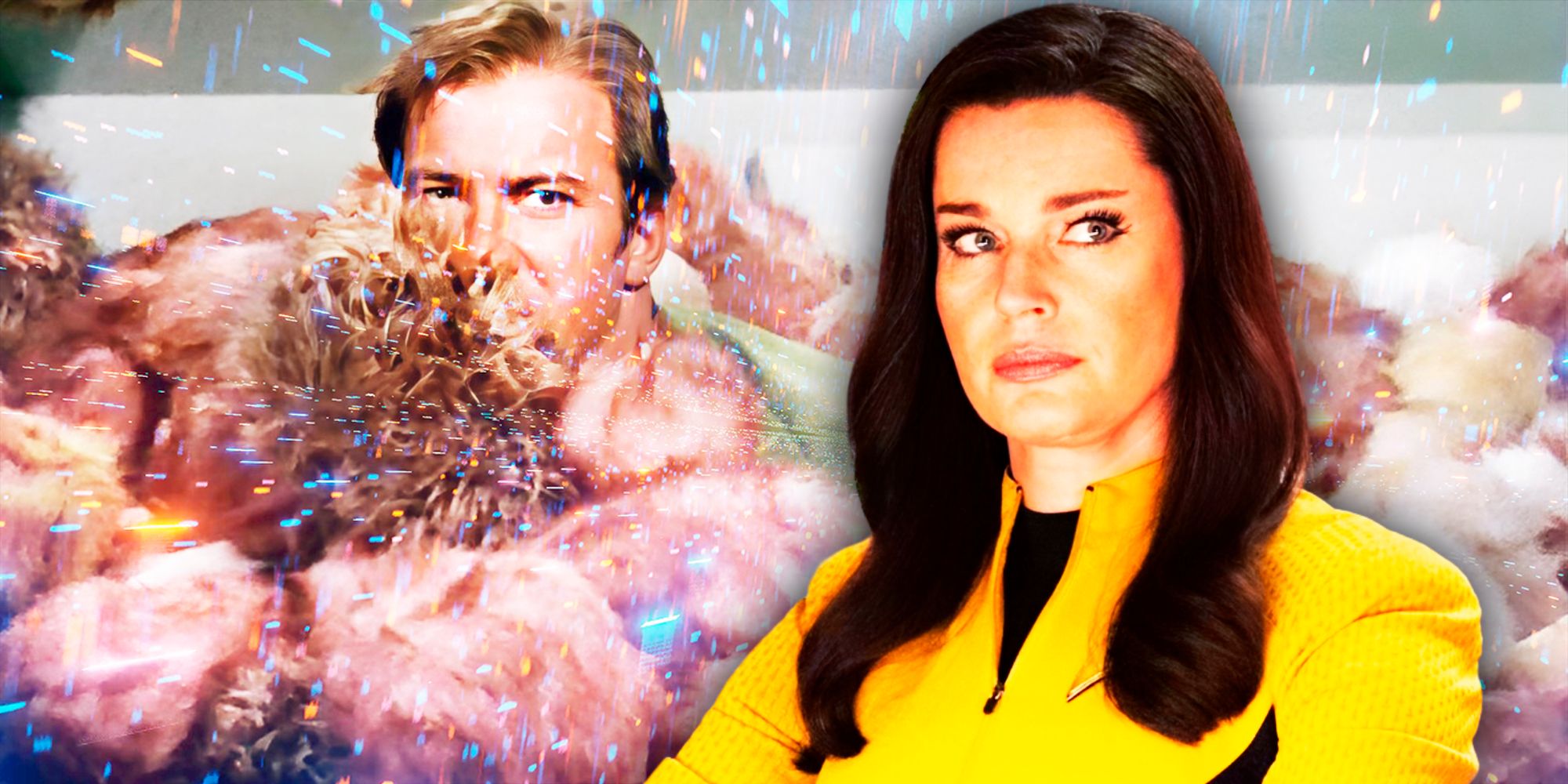Maybe she was just acting, but Demi Moore seemed genuinely surprised to win a Golden Globe on Sunday night. “I’m just in shock right now,” she gasped. “I’ve been doing this a long time, like over 45 years, and this is the first time I’ve won anything as an actor.”
It’s an odd thing to hear from a woman who has been one of the most famous actors on the planet for much of that 45 years. It reflects the fact that Moore has often been recognised for everything except her acting: her beauty, body, dress sense, salary, box office and love life. All of which makes her rehabilitation and recognition truly satisfying. In her acceptance speech, she spoke of having been branded a “popcorn actress” by a producer 30 years ago – commercially successful but unworthy of acclaim. No wonder she closed her speech celebrating the award “as a marker of my wholeness”.

Of course, The Substance – for which Moore won “best performance by a female actor in a motion picture musical or comedy” – is a story with deafening resonance for the 62-year-old actor: she plays Elisabeth Sparkle, a washed-up star who overcomes her imminent obsolescence by way of an experimental drug that hatches a newer, younger self (played by twentysomething Margaret Qualley) out of her body. Part-Dorian Gray, part-Cronenberg body horror, part-All About Eve showbiz rivalry fable, The Substance is a garish and gory satire of the way Hollywood idolises female youth, and the violence women are encouraged to do to themselves as they age (though how the hell it qualifies as either a musical or a comedy is anyone’s guess). As Moore put it in one interview: “The question is, would you trade your wisdom for a tight ass?”
Despite Moore’s brilliant abandon in The Substance, it would be misleading to read the movie as autobiographical – especially if you’ve read her actual autobiography, Inside Out, published in 2019, which would make for a very different kind of movie. More like a miniseries, in fact. She has had the kind of Hollywood career most female actors would both dream of and never wish on their worst enemy. It is the epitome of late 20th-century Hollywood and its pitfalls; for better or worse, much of her career has revolved around questions of the body.

It is easy to forget how body-obsessed Hollywood was in the 80s and 90s – with the ideal being even less flexible than it is today. Body positivity was barely heard of; the only game in town for women was the thin, airbrushed, gym-toned, invariably white-skinned standard, achievable only by good fortune, expensive surgery or punishing Jane Fonda-style workout routines (which The Substance parodies mercilessly).
Moore’s entry into this world was classically sleazy: a male photographer persuaded her to pose nude when she was 17 years old, and sold the photos to magazines. Her first big movie break was even dodgier: 1984’s Blame It on Rio, in which her on-screen dad (Michael Caine) has an affair with her best friend (Michelle Johnson, who was then 17), even as Caine’s best friend pervs over a topless Moore at the beach. It was even less a comedy than The Substance.

Fortunately for Moore, her rise coincided with that of the brat pack, which gave her more substantial, real-world characters in the classic coming-of-ager St Elmo’s Fire and yuppie romcom About Last Night. But then Ghost happened and Moore was catapulted into a different league. The movie, whose ridiculous supernatural premise Moore did much to sell, was a phenomenon: the highest-grossing picture of 1990 in the US, it made Moore’s pixie haircut a fashion reference point and would go on to launch a million pottery gifs. By this time she was married to Bruce Willis, and therefore one of the most famous people on the planet, hounded by paparazzi, plastered over celebrity magazine covers, generally unignorable.
When she appeared on the cover of Vanity Fair in 1991 – naked and displaying her seven-months-pregnant belly – the commentary went into overdrive. Had the internet existed back then, Moore would have broken it. She did the same a year later with another Vanity Fair cover, a men’s suit painted onto her naked body. Some applauded these covers as feminist statements; others were outraged, horrified or insulted.

It was something of a turning point. Now Moore’s celebrity, her presumed “attitude” and her ever-escalating pay began to overshadow her capabilities as an actor and it became harder and harder for her to disappear into roles. That wasn’t made easier by the fact that so many of Moore’s movies continued to highlight her physical appearance. In Indecent Proposal, for example, Robert Redford offered to pay one million dollars to Moore’s husband Woody Harrelson to spend the night with her – which was hard to square as a feminist statement.
Off-screen, Moore has said she became “addicted” to exercising. It started when she landed the role as a naval lawyer in A Few Good Men, shortly after giving birth to her second daughter, Scout (the bump in that Vanity Fair cover). “It was my job to fit into that unforgiving military uniform I’d be wearing in two months,” she later wrote. “Getting in shape for that movie launched the obsession with working out that would consume me over the next five years. I never dared let up.”
That obsession seemed to feed into the two roles that almost destroyed her, professionally as well as physically: Striptease, in 1996, and GI Jane a year later. The former was always going to be a hot-button movie. Moore played a divorced mother who strips to earn money to gain custody of her child, but the attention inevitably focused on her highly toned, often exposed physique – for which Moore later said she starved herself to the extent that her breast milk did not contain enough fat to nourish her daughter. Her salary was $12.5m – the highest ever paid to a female actor at the time, and the subject of massive criticism and debate in the media. (Never mind that her husband, Willis, was being paid $15m for a Die Hard movie.) Rather than being praised for shattering the glass ceiling, Moore was criticised for affirming the patriarchy.

Ridley Scott’s GI Jane – about the first female recruit on a punishing navy training programme – was another contradictory exercise in breaking down gender barriers, even as Moore subjected herself to an almost self-destructive training regime. Both movies were flops, damaging her career, health and reputation. “With Striptease, it was as if I had betrayed women, and with GI Jane, it was as if I had betrayed men,” she later told an interviewer.
It would be easy to look back on Moore’s career, chequered with stellar success and questionable choices, as an extended ego trip, but Moore has said the opposite is closer to the truth: that she was motivated by feelings of self-loathing and inadequacy, and that she always lacked confidence. In her autobiography she revealed a shocking litany of traumatic early life experiences. Her parents were heavy drinkers, her mother attempted suicide several times, the man she took to be her dad turned out not to be her biological father, and she was raped at 15 by a man who said to her: “How does it feel to be whored by your mother for $500?”

She left home at 16, married at 17 (to first husband Freddy Moore), and was in rehab at 21 for alcohol and cocaine (at the insistence of St Elmo’s Fire director Joel Schumacher). She relapsed during her marriage to Ashton Kutcher, from 2005 to 2013, abusing alcohol and Vicodin, but is again sober, and apparently on good terms with her blended family: Willis (who was diagnosed with dementia in 2023), Kutcher and her three children.
You can see how these experiences must have fed into a role like The Substance, not just in her performance but also our appraisal of it as viewers, knowing her history as we do. She has spoken of the role as “liberating” – partly in the sense, it seems, that she is at peace with her body and her self-image at last, to the extent she no longer feels she has to embody perfection, but can instead portray something closer to the opposite (even if she still looks amazing).
And it’s hard not to read the movie’s operatically gross ending as a gigantic clap back to all the male gazing she’s been subjected to in her career. But Moore has also said playing Elisabeth in The Substance was easy for her, “because I don’t feel I am her. This is a woman who has no family. She’s dedicated her entire life to her career, and when that’s taken, what does she have?”
Even when her career wasn’t firing on all cylinders, Moore had a lot going on in her life. Now, with awards season just beginning, and her star back on an upward trajectory, she potentially has even more to come.
When her own question was put back to her – would you trade your wisdom for a tight ass? – Moore’s response was telling. “I would like not to have to choose,” she said.

 1 week ago
8
1 week ago
8








 English (US) ·
English (US) ·